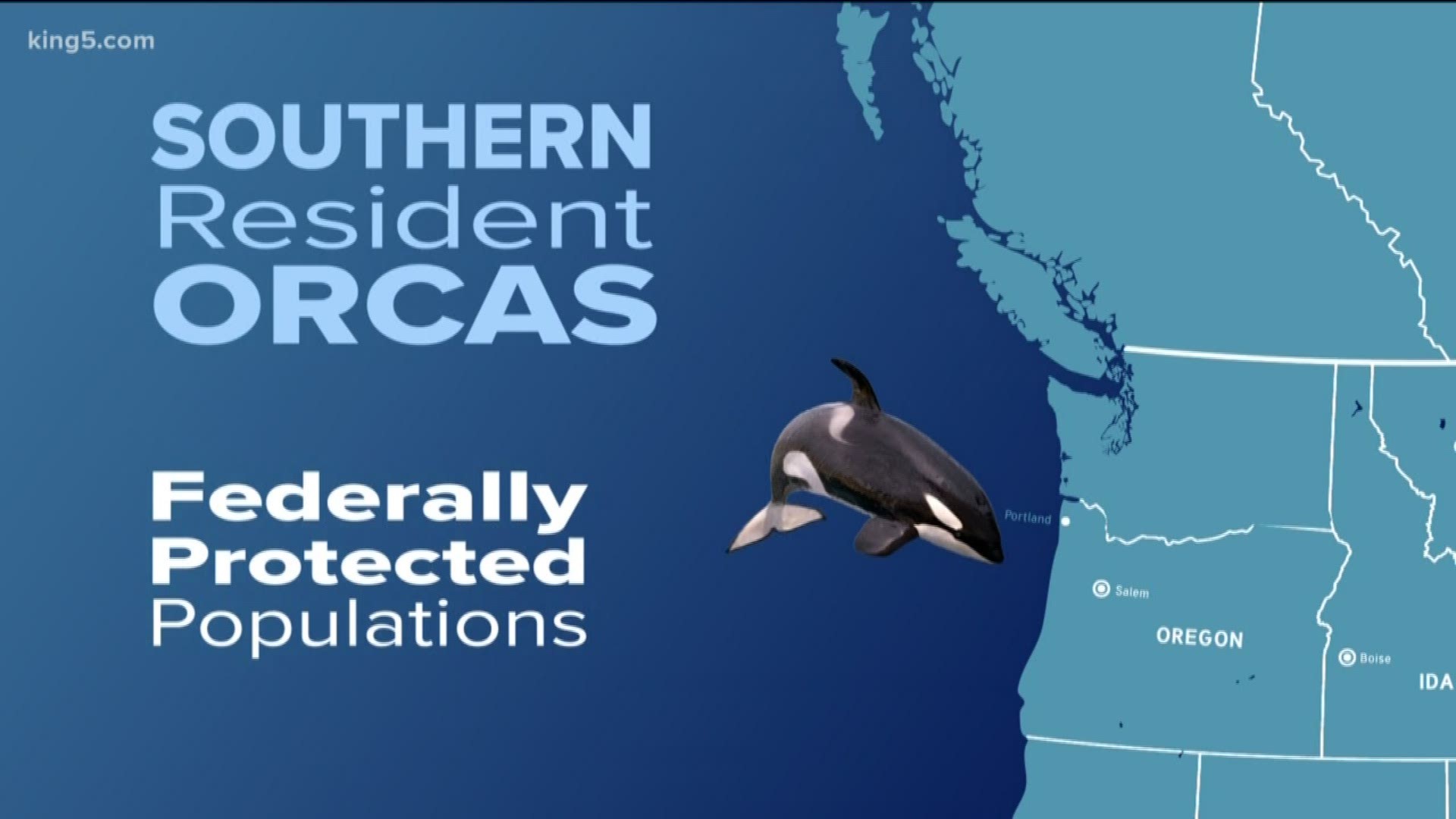Researchers are celebrating two positive updates for ailing orca J50. First, the Southern Resident killer whale was spotted swimming Monday, after scientists feared she was dead. On top of that, researchers were able to administer another round of antibiotics to the whale.
The Center for Whale Research was concerned after J50 was missing from her pod over the weekend. NOAA released a statement Monday morning that the young whale did not return from open waters with her family group.
But just hours later, J50, also known as Scarlet, was spotted in the Salish Sea. Video taken by Traci Walter shows J50 swimming with her pod near San Juan Island around 1:30 p.m. Monday. "She's a spunky little whale and keeps surprising us. If any whale is going to make it through this experience that she's having, it's going to be this whale," said researcher Deborah Giles. "She keeps surprising us."
J50, the 3 ½-year-old whale, had lost 20 percent of her body mass and developed a depression near the base of her skull, indicating severe fat loss and malnutrition.
Lab results from collected fecal samples determined J50 could have a parasite, which can harm a weakened or emaciated whale.
Several attempts have been made in recent weeks to improve J50's health, including administering antibiotics and distributing of live salmon.
"She is just a canary in the coal mine that says, 'Look, something is wrong. Something needs to be done. Start doing something about it.'"
Jeff Hogan has helped research the Southern Resident killer whales for decades. For him and many others, J50's story is not unique. She's sick and starving, as her entire family group faces possible extinction.
"I feel like we keep going back and readdressing and re-asking the question, when we already know the answer," Hogan said.
Hogan's skepticism of slow-moving efforts to save the whales prompted him to create Killer Whale Tales, a program aimed at educating kids about how they can help, in hopes adults catch on too. Scientists have known for years that the whales face a trifecta of challenges: noise, dwindling fish stocks, and pollution. But even with the knowledge, the whales continue to decline.
"Those were the three best guesses since I started working with these animals: sound, lack of prey, and toxins," Hogan said. "We keep saying the same things over and over again. The only one we ever seem to get traction on is the noise."
J50 was last spotted August 30, swimming about 3 ½ miles behind most of the J Pod, according to NOAA. Because the whales typically stick together, researchers began to question whether she was still alive. The J Pod was spotted this weekend returning "from the open waters off the West Coast of Vancouver Island to the Salish Sea," without J50.
Despite the relief over her return, there is still much skepticism that she will survive much longer.
"Maybe J50 is somewhere in the Strait of Juan de Fuca, but I am certain she will not survive, and it is amazing that she has lasted so long in the condition we saw her at the beginning of summer," said Ken Balcomb with the Center for Whale Research before J50's return Monday.
Governor Inslee’s Southern Resident Killer Whale Task Force has until November to submit recommendations to save the endangered whales.
For Hogan and many others, the survival of the Southern Resident killer whales is dubious at best.
It's time, he says, to take a look at how each of us can help whales like Scarlet and stop waiting for someone else to save them.
"And when we're still asking questions about what's in this for us, instead of what we need to be doing about the whales, I think that's where the whole thing stalls out," Hogan said.




